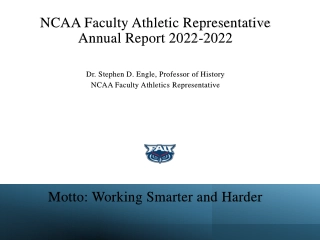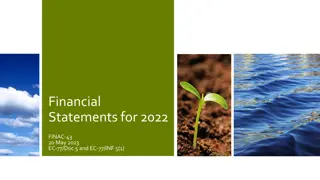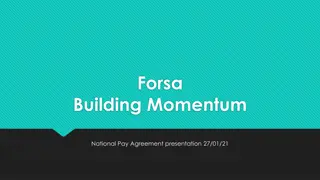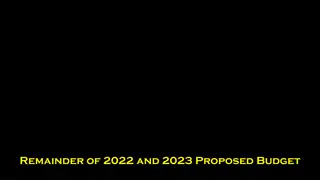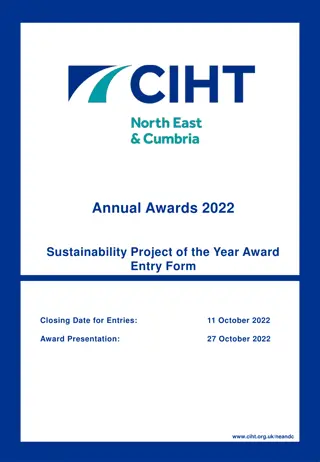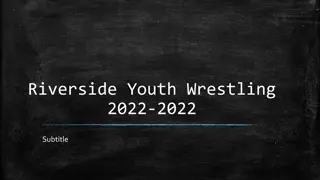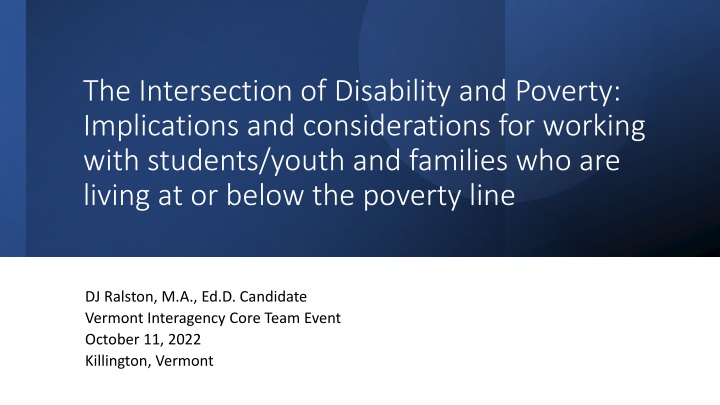
The Intersection of Disability and Poverty: Implications for Students and Families
Explore the connection between disability and poverty, how Social Security Disability programs affect individuals, and why professionals should address poverty through financial empowerment. Learn strategies and resources to support students and families living in poverty.
Download Presentation

Please find below an Image/Link to download the presentation.
The content on the website is provided AS IS for your information and personal use only. It may not be sold, licensed, or shared on other websites without obtaining consent from the author. If you encounter any issues during the download, it is possible that the publisher has removed the file from their server.
You are allowed to download the files provided on this website for personal or commercial use, subject to the condition that they are used lawfully. All files are the property of their respective owners.
The content on the website is provided AS IS for your information and personal use only. It may not be sold, licensed, or shared on other websites without obtaining consent from the author.
E N D
Presentation Transcript
The Intersection of Disability and Poverty: Implications and considerations for working with students/youth and families who are living at or below the poverty line DJ Ralston, M.A., Ed.D. Candidate Vermont Interagency Core Team Event October 11, 2022 Killington, Vermont
Workshop Objectives Increased understanding of how disability and poverty are connected Increased understanding of how Social Security Disability programs can/do inadvertently trap students/youth/families in poverty Increased understanding of why professionals need to both consider and address poverty through the integration of financial empowerment and comprehensive wrap-around supports for the students/youth/families they are working with Increased knowledge of strategies and resources to support the integration of financial empowerment and comprehensive wrap-around supports.
Understanding the Connection between Disability and Poverty Theory, Demographics, Research, and Impact
Theoretical Approaches of Poverty Basic Needs Approach Capability Approach Economic Resources Approach* Poverty in Theory A deprivation of basic needs (i.e. sanitation, water, shelter) The inability to convert one's capabilities into comfort and prosperity The deprivation of the financial resources needed to meet one s consumption needs Poverty understood as: Considered a complex multidimensional phenomenon that cannot be defined by any single element but, instead, is conceptualized as an interlacing set of elements that relate to geographical areas, socioeconomic status, gender, disability and a variety of other factors (Palmer, 2011; Nye-Lengerman & Nord, 2016) Determinants of Poverty Assumes that individuals lack the education, skills, and work experience needed in order to meet basic needs with enough money left over to save for emergencies Human Capital Theory Assumes that the personal choices of the poor are the reason they are poor and remain poor, be that in part or in full because of their environment Personal Choice Theory Nye-Lengerman, K., & Nord, D. (2016). Changing the message: Employment as a means out of poverty. Journal of Vocational Rehabilitation, 44(3), 243-247. Palmer, M. (2011). Disability and poverty: A conceptual review. Journal of Disability Policy Studies, 21(4), 210-218.
Poverty Type Situational Poverty Occurs as a lack of resources resulting from a particular event (i.e., global pandemic, major accident, disability onset, chronic illness, divorce, death, etc.) Generational Poverty A lack of multiple resources for at least two generations. Patterns associated with generational poverty, like rise of emergent disability are likely to surface much sooner for those who live with others experiencing generational poverty. Emergent Disabilities are those impairments that are closely linked to poverty
2022 Federal Poverty Guidelines (100%) Size of Family Unit 48 Contiguous States and D.C. Alaska Hawaii $13,590/year ($1,132/month) 1 $16,990 $15,630 2 $18,310 $22,890 $21,060 3 $23,030 $28,790 $26,490 4 $27,750 $34,690 $31,920 Source: U.S. Department of Health and Human Services (January 2022). Federal Register, Vol. 87, No. 14, January 21, 2022, pp. 3315-3316. https://aspe.hhs.gov/poverty-guidelines Federal Poverty Guidelines
Supplemental Security Income (SSI) Recipient Eligible Individual Eligible Couple Monthly $841 $1,261 SSI Payments = 1st of Month Annual $10,092 $15,137 Asset Limit $2,000 $3,000 Social Security Administration, SSI Federal Amounts 2022http://www.ssa/gov Social Security Disability Insurance (SSDI) Average Monthly Range (2022) Average Annual (2022) Asset Limit Based on Work Record $700 - $1400 $10,000 - $16,800 None SSDI Payments = 2nd, 3rd, OR 4th, Wednesday (Depending on Last Name) Laurence, B. (2022). How Much Can You Get In Social Security Disability Benefits Can You Get.
Disability and Poverty Demographics People with Disabilities People without Disabilities Employment Rate 24.7%* Hold a Bachelors or Higher - 18.2%* Living in Poverty 19.5%* Extreme difficulty paying bills - 23%** Unbanked - 12%** Likely to use costly non- banking options - 42%** Employment Rate 72.7%* Hold a Bachelors or Higher - 36.5%* Living in Poverty 9.7%* Extreme difficulty paying bills - 9%** Unbanked - 6%** Likely to use costly non- banking options - 25%** American Community Survey. (2019). Selected economic characteristics for the civilian noninstitutionalized population by disability status [Data set]. https://data.census.gov/cedsci/table?q=disability&tid=ACSST1Y2019.S1811&hidePreview=false **https://www.nationaldisabilityinstitute.org/wp-content/uploads/2018/12/finra-infographic.pdf
According to a report from the National Disability Institute (NDI), households containing an adult with a work-disability are estimated to require, on average, 28 percent more income (or an additional $17,690 a year for a household at the median income level) to obtain the same standard of living as a comparable household without a member with a disability** (Goodman, Morris, M., Morris, Z., McGarity, 2020) **https://www.nationaldisabili tyinstitute.org/wp- content/uploads/2020/10/extr a-costs-living-with-disability- brief.pdf Extra Costs of Disability
What we know from research Financial stress is linked to poor health American Psychological Association (2015) Mental health and debt are associated - Metzler et al., 2012; Fitch et al., 2007 Hardship experiences themselves can lead poor health and disability - Yoo et al., 2009 The relationship between poverty, disability, and health is cyclical - Allard, Danzinger, & Wathen, 2012; Iceland, 2013; Nye-Lengerman & Nord, 2016 Disability and poverty are interconnected, each and cause and consequence of the other. - Elwan, 1999
Poverty and the Science of Scarcity Research and Findings from Behavioral Economics (1) The Science of Scarcity A Behavioral economist s fresh perspectives on poverty (May-June 2015) https://www.harvardmagazine.com/2015/05/the-science-of-scarcity Sendhil Mullainathan (Harvard Economist) and Eldar Shafir (Professor of Psychology and Public Affairs at Princeton) In their 2013 book Scarcity: Why Having Too Little Means So Much, laid out years of findings from the fields of psychology and economics, as well as their own new empirical research. Based on their analysis of the data, they demonstrated how scarcity steals mental capacity wherever it occurs whether a result of hunger, loneliness, lacking the time necessary to complete tasks or being poor.
Poverty and the Science of Scarcity Research and Findings from Behavioral Economics (2) Findings from Poverty depletes parents cognitive resources therefore leaving little space for making everyday decisions about parenting. Low-income parents are also at far greater risk for depression and anxiety-poverty s mental tax . When parents are distracted or depressed, family life is likely characterized by conflict and emotional withdrawal rather than nurturing and supportive relationships with children. Impulsive behavior, poor performance in school, poor financial decision-making may be products of a feeling of scarcity. Just thinking about scarcity taxes the mind and increases stress. Policies and programs need to consider scarcity- induced behavior in their design. Look at the cockpit rather than the pilot .
Poverty and the Science of Scarcity Research and Findings from Behavioral Economics (3) Scarcity is distracting. It leads to seeing most experiences, including everyday mundane experiences, through an economic lens that is difficult to ignore, often altering mental associations and impacting other experiences. (Shafir, 2017; Shah et al., 2018) Depletion is associated with poor decision making. Depletion, often induced as a result of persistent scarcity results in a focus on the current, here-and-now problem which most often results in a short-term fix as opposed to foreseeing and avoid long term issues. (Kalil et al., 2022; Shafir, 2017; Shah et al., 2018)
Impact of Poverty Families may be dependent on the student/youth s SSA Benefits check and may be fearful of jeopardizing that. Expectations of Student/Youth Family participation and support of students/youth in programming can be impacted due to lack of resources (e.g., transportation, childcare). Instability, as a result of poverty, can and does impact long-term planning. Managing resources, one doesn t have, is cognitively, mentally, and emotionally taxing leads to depletion and decision making based on the current near-term problem as opposed to foreseeing and avoiding long-term issues.
Reflection Question Think about some of the students/youth and their families you ve worked with, how how have you seen a lack of income/resources impact participation and quality of life?
What Can We Do? Change the Narrative Understand and Explain the Basics of Social Security Work Incentives Understand and Promote Financial Capability for Students/Youth with Disabilities Leverage the Workforce Innovation and Opportunity Act (WIOA) to integrate financial empowerment strategies to support financial capability Familiarize Oneself with Financial Empowerment Strategies and Resources to Support Financial Capability Slow Down and Adjust How We Provide Services
Basics of Supplemental Security Income (SSI) Supplemental Security Income (SSI) is a Title XVI program An individual must prove that they are financially eligible for SSI (needs based) and because it is needs-based, SSI looks at all types of income (earned, unearned and in- kind). Monthly income less than $841/month Assets less than $2000 (for single individuals) Eligible couple = $1191/month and $3000 assets Federal Benefit Rate Maximum: 2022 equals $841 per month Medical Insurance = Medicaid
Supplemental Security Income (SSI) and Medicaid Medicaid, like SSI, is a means-tested program, in other words continued eligibility depends on income and resources (just like SSI). Medicaid is a federal-state program, meaning it has both federal requirements but allows latitude for implementation at the state level. Because it is a federal program with states control, who and what gets covered can vary greatly from state to state. Medicaid typically covers a wide array of services ranging from inpatient hospital care/stays to home health aids, to physician services etc.
Key SSI Work Incentives Plan for Achieving Self-Support A Plan for Achieving Self-Support (PASS) is a SSI work incentive that allows a beneficiary to set aside income/resources into a protected account for a pre-determined duration of time in order to help the person achieve a work goal. A PASS is essentially a protected savings vehicle that allows a beneficiary to set funds aside that cannot be counted against the means tests for SSI or Medicaid. Types of expenses that a PASS can be used for include; education or training, job coaching or other support services, transportation, job- related items, equipment needed to start a business, or most other things needed to achieve an occupational goal. Student Earned Income Exclusion (SEIE) The Student Earned Income Exclusion (SEIE) is for beneficiaries who are under the age of 22 and who regularly attend school (high school, college or training to prepare for employment). Regular school attendance is based on a certain number of hours depending on whether the student is in high school, college or training. The SEIE allows a student who meets the requirements to earn up to $2,040.00 a month with a maximum of $8,230.00 per year and exclude that income from the determination of their SSI payment.
What is financial capability? Financial Capability encompasses multiple aspects of behavior relating to how individuals manage their resources and how they make financial decisions (including the factors they consider, and the skill sets they use). It is a multi-dimensional concept that requires looking at individual behavior from various angles. What is Financial Capability and Why Promote Why is it important to promote financial capability? People with disabilities are more likely to be unemployed and to live in poverty than any other single demographic group in the United States today. it? Public benefit programs for people with disabilities, especially Supplemental Security Income (SSI), are not aimed at increasing assets and independence for people with disabilities. More so than any other population on a fixed income, services and policies do not hold the expectation of economic self-sufficiency. http://www.usfinancialcapability.org/about.php
As stated previously, financial capability includes a range of behaviors and supports, but as part of the transition process, whether through an individual education program (IEP) under IDEA, or through Pre-Employment Transition Services and/or an individual plan for employment (IPE), (WIOA Title IV), or an individual service strategy (ISS) plan (WIOA Title I) or any other programming that support transition from adolescent to adulthood, general discussions related to one s financial landscape and receipt of Social Security Benefits should be part of those services (at a minimum). Who Provides Financial Capability Support? For youth and students in receipt of Social Security Benefits, who are determined eligible for and enrolled in Vocational Rehabilitation services, a personalized benefits analysis and work incentives plan needs to occur at multiple points during the rehabilitation process. Discussions of the student/youth s financial situation should include family if the youth has not reached the age of majority. Discussions should focus on ensuring the student/youth receives all the support they need in order to work and earn.
Leverage WIOA to Integrate Financial Empowerment Strategies and Work Incentives Benefits Counseling to Support Financial Capability (1) The passage of the Workforce Innovation and Opportunity Act (WIOA) has given way to a renewed emphasis on helping people (including people with disabilities and social security beneficiaries) find quality long-term sustainable employment as demonstrated through the establishment of Common Performance Measures across Core programs including Vocational Rehabilitation. Employment Rate 2nd Quarter After Exit Employment Rate 4th Quarter After Exit Credential Attainment Measurable Skills Gain
Leverage WIOA to Integrate Financial Empowerment Strategies and Work Incentives Counseling to Support Financial Capability (2) Quality Long-Term Employment as a goal shifts the focus for employment programs under WIOA (including those serving persons with disabilities), from placement as the goal to retention as the goal. This shift supports and is consistent with a push for self-sufficiency. Benefits and Work Incentives Counseling are an integral part of helping Disability Beneficiaries prepare for, return to work, and stay at work, but while paramount, is only one piece of the larger picture when it comes to helping persons move towards economic stability. Looking at SSA benefits and the impact of work on those benefits without considering a participant s larger financial picture is setting the participant up to fail. In fact, integration of financial empowerment strategies into existing services is essential for all participants in order to promote financial capability.
Financial Literacy FDIC's Money Smart for Grades 6-8 FDIC's Money Smart for Young People (Ages 12-20) CFPB's Your Money Your Goals Toolkit CFPB s Your Money Your Goals Companion Guide for Individuals with Disabilities CFPB s Booklets to Help Talk About Money Financial Empowerment Resources to Support Financial Capability Active and Ongoing Benefits/Work Incentives Counseling Connecting to a benefits counselor who can help a student/youth and their families understand applicable work incentives is essential Work Incentives Planning and Assistance (WIPA) programs https://www.ssa.gov/work/WIPA.html ABLE Accounts An ABLE Account is a tax-advantaged savings account for individuals with disabilities and their families. The beneficiary of the account is the account owner, and income earned by the accounts will not be taxed. https://www.ablenrc.org/
Slow Down and Adjust Slow down things are not always as they appear. Look beyond what is in front of you and consider the larger picture accounting for how living in a scarcity- induced mindset can contribute to actions and behaviors. Adjust how we provide services.
References Allard, S., Danzinger, S., & Wathen, M. (2012). Receipt of public benefits and private support amount low-income households with children after the great recession. Policy Brief, 12, Ann Arbor, MI: National Poverty Center American Psychological Association. (2016). Education and socioeconomic status. Retrieved from https://www.apa.org/pi/ses/resources/publications/education.aspx. American Psychological Association (2016). Socioeconomic status. Retrieved from http://www.apa.org/topics/socioeconomic-status/ Anderson, C.A., Johnston, S. & Partch-Davies, T. (2016, September, 14). The intersection of disability and poverty: Implications for practice [PowerPoint Slides]. National Rehabilitation Association Annual Conference, Richmond, VA. Anderson, C.A. & Smith, J. (2017, December, 7). Disability and Poverty: An overview of research, policy, and practice [PowerPoint Slides]. Wisconsin Department of Health Service Bureau of Aging and Long-Term Care Services All Staff Meeting, Madison, WI. Elwan, A. (1999). Poverty and disability: A survey of the literature (Social Protection Discussion Paper Series No. 9932). Washington, DC: Social Protection Unit, Human Development Network, World Bank. Gennetian, L. A., & Shafir, E. (2015). The persistence of poverty in the context of financial instability: A behavioral perspective. Journal of Policy Analysis and Management, 34(4), 904-936. Goodman, N., Morris, M., Boston, K., & Walton, D. (2017). Financial inequality: disability, race and poverty in America. National Disability Institute. Houtenville, A., & Boege, S. (2019) Annual Report on Persons with Disabilities in America: 2018. Durham, NH: University of New Hampshire, Institute on Disability Hughes, C., & Avoke, S. K. (2010). The elephant in the room: Poverty, disability, and employment. Research and Practice for Persons with Severe Disabilities, 35(1-2), 5-14. Iceland, J. (2013). Poverty in America: A handbook. Berkeley, CA: University of California Press. Kalil, A., Mayer, S., & Shah, R. (2022). Scarcity and Inattention. SSRN Electronic Journal. https://doi.org/10.2139/ssrn.4138637 Mullainathan, S., & Shafir, E. (2013). Scarcity: Why having too little means so much. Macmillan. Nye-Lengerman, K., & Nord, D. (2016). Changing the message: Employment as a means out of poverty. Journal of Vocational Rehabilitation, 44(3), 243-247. Palmer, M. (2011). Disability and poverty: A conceptual review. Journal of Disability Policy Studies, 21(4), 210-218. Ralston, D.J., & Thuli-Crane, K. (2021, August, 31). Understanding the big picture: The connection between disability and poverty and why financial capability matters. [PowerPoint Slides]. Online Webinar. https://transitionta.org/trainings/disability-poverty-financial-capability-webinar/ Shafir, E. (2017). Decisions in poverty contexts. Current opinion in psychology, 18, 131-136. Shah, A. K., Zhao, J., Mullainathan, S., & Shafir, E. (2018). Money in the Mental Lives of the Poor. Social Cognition, 36(1), 4 19. https://doi.org/10.1521/soco.2018.36.1.4


